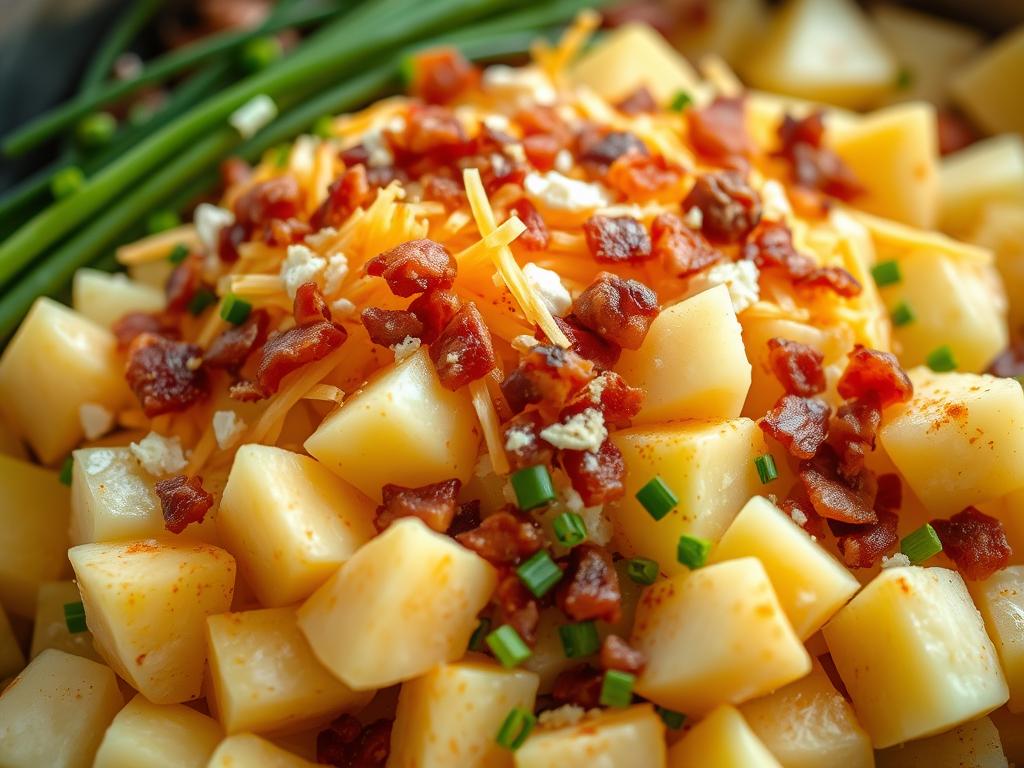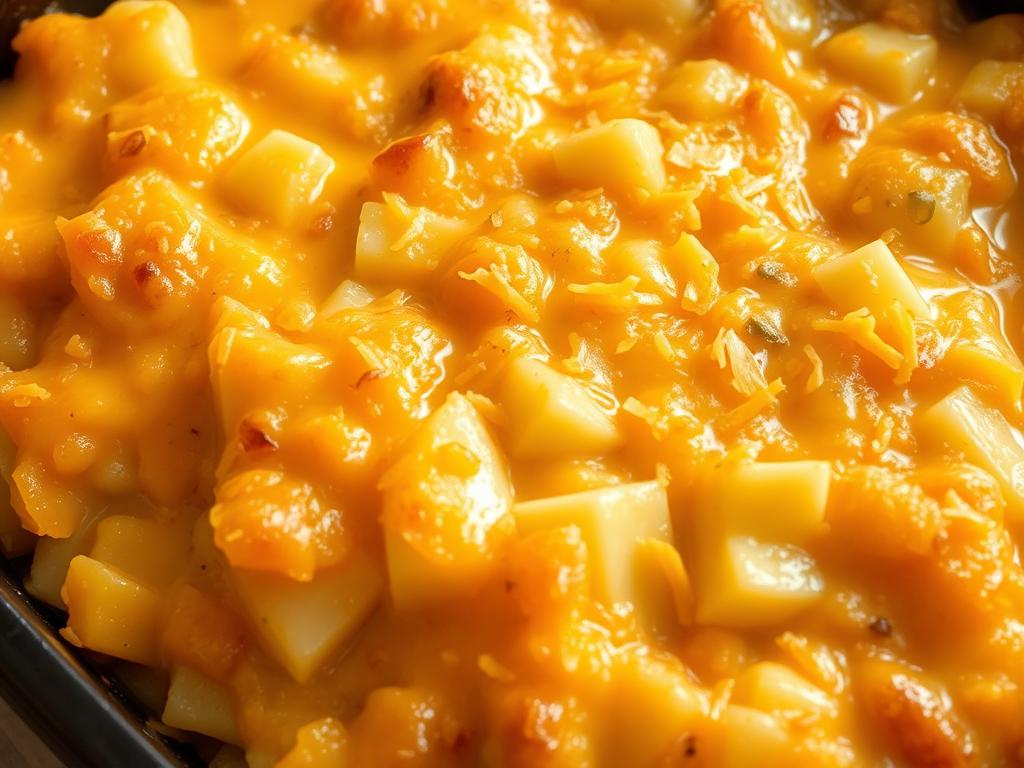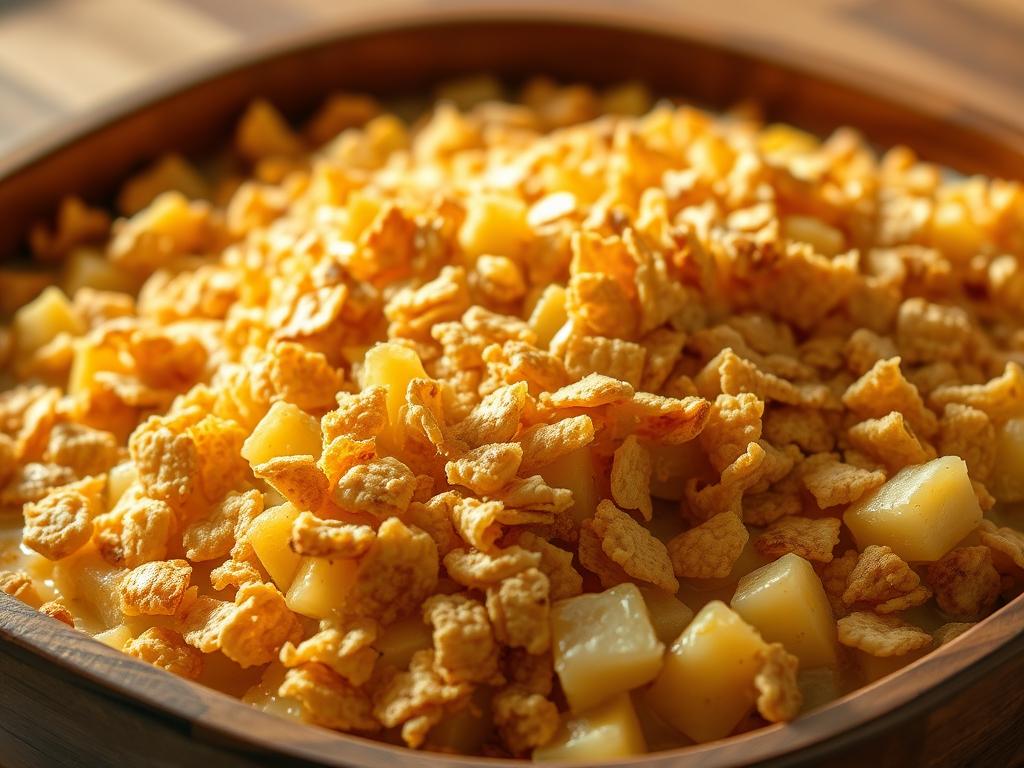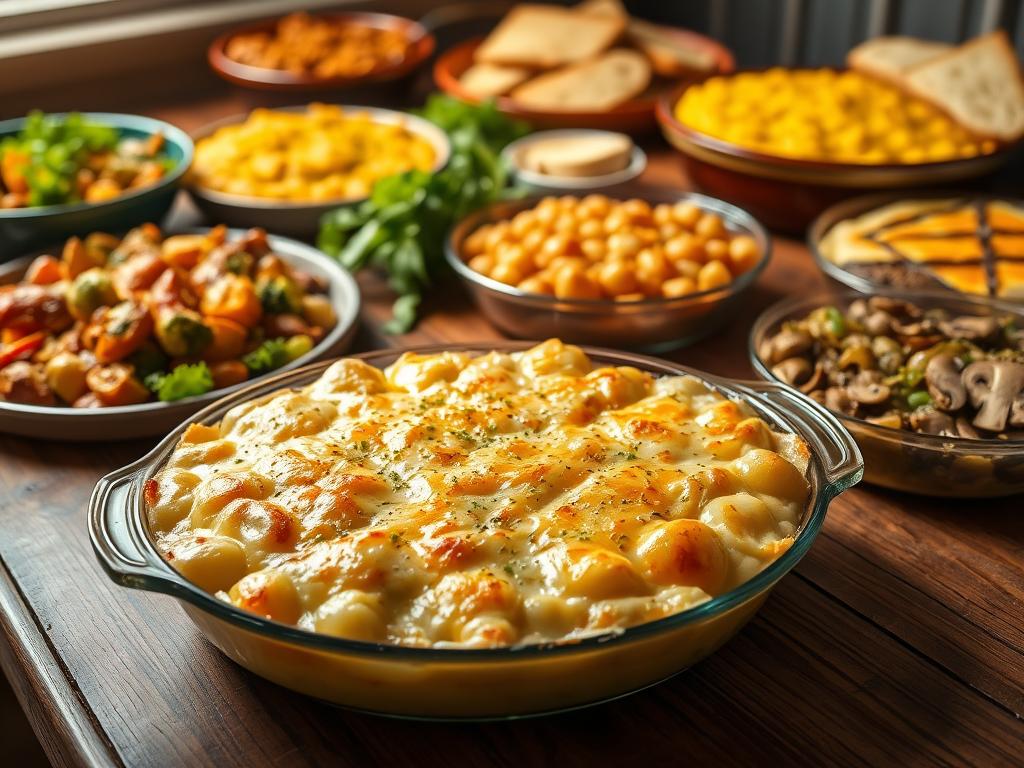Have you ever tasted a dish that feels like a warm hug? That’s exactly what happens with Funeral Potatoes. Whether it’s a holiday dinner or a casual potluck, there’s something special about the creamy center and crispy topping coming together in one comforting bite. It’s more than just a casserole—it’s a dish full of memories, shared stories, and the kind of comfort that brings people together.
This beloved recipe has a unique story. Born from tradition, it became a staple at gatherings where comfort mattered most. While its name might sound somber, it’s really about celebration—bringing people together during life’s highs and lows. The combination of tender potatoes, rich cheese, and crispy cornflakes isn’t just delicious; it’s a symbol of care and community.
What makes this dish so special? It’s versatile enough for Sunday dinners yet elegant enough for holiday spreads. Beginners love its simplicity, while seasoned cooks appreciate how easily it adapts to creative twists. Best of all, every scoop reminds us that good food isn’t just about flavor—it’s about the hands that prepare it and the hearts that share it.
Key Takeaways
- A comforting blend of creamy cheese sauce, tender potatoes, and crispy toppings creates an unforgettable flavor experience.
- Originating from community traditions, this casserole earned its name through its role in bringing people together during meaningful moments.
- Perfect for holidays, potlucks, or weeknight meals, it adapts effortlessly to any occasion or skill level.
- The contrast between soft interiors and crunchy exteriors makes every bite satisfyingly textural.
- More than just a recipe, it represents connection—a dish meant to be shared with loved ones.
Introduction to a Comfort Food Classic
Ever wonder how certain dishes become woven into our lives? This casserole’s journey begins with compassion—a simple act of bringing warmth to those navigating loss. Its distinct name might raise eyebrows, but it’s rooted in kindness, not sorrow.
The Story Behind the Name
In Midwestern and Mormon communities, neighbors often deliver meals to grieving families. This dish became a go-to choice for its practicality and comforting richness. The title reflects its role in these gatherings—nourishing bodies and souls when words fall short.
Why This Dish Resonates in American Culture
Beyond its origins, the recipe symbolizes unity. It’s a tangible way to say, “We’re here for you.” Churches, potlucks, and holiday tables alike embrace it because everyone recognizes its power to connect. Even today, swapping recipes or adding personal twists keeps the tradition alive.
What started as a gesture of support now stars at celebrations too. That’s the magic of food—it adapts, evolves, and reminds us we’re never alone. Whether served with tears or laughter, this casserole remains a testament to shared humanity.
Exploring the Cultural Roots and Traditions
What makes a recipe more than just food? For this iconic side dish, the answer lies in its ability to unite people through shared moments. Its cultural significance stretches far beyond church basements and family kitchens—it’s a symbol of care that transcends generations.
Origins and Community Connections
Born in Midwestern kitchens and Mormon gatherings, this casserole became a practical way to nourish families during difficult times. Churches organized meal trains where neighbors delivered ready-to-bake dishes to grieving households. The creamy texture and hearty ingredients provided sustenance when cooking felt impossible.
Regional Twists and Family Secrets
As the recipe spread nationwide, creative adaptations emerged. Some households use frozen hash browns for convenience, while others swear by hand-grated spuds. You’ll find variations in:
- Cheese choices: Sharp cheddar, pepper jack, or smoked gouda
- Soup bases: Cream of chicken, mushroom, or celery
- Toppings: Crushed cornflakes, fried onions, or toasted breadcrumbs
These personal touches transform the dish into a family heirloom. One Utah cook adds diced ham for protein, while a Texas family mixes in green chiles for heat. Despite these differences, every version keeps the core mission intact—offering comfort through shared meals.
Key Ingredients and Their Impact

What transforms simple ingredients into something extraordinary? Every element in this casserole plays a starring role, working together to create that crave-worthy balance of comfort and crunch. Let’s unpack how each component contributes to the magic.
Understanding the Cheesy and Creamy Elements
The heart of this dish lies in its creamy richness. Sour cream adds tangy depth while keeping the texture luxuriously moist—think of it as the velvet base that carries other flavors. Combined with cream of chicken soup (or celery for vegetarians), it forms a savory glue that binds everything without overwhelming the palate.
Shredded cheddar steals the show with its melt-in-your-mouth quality. Its sharpness cuts through the richness, creating those signature cheese pulls we all love. Pro tip: Use freshly grated cheese for smoother melting—pre-shredded varieties often contain anti-caking agents that can make sauces grainy.
The Role of Hash Browns, Sour Cream, and Butter
Frozen hash browns are the unsung heroes here. Their shredded texture absorbs the creamy mixture like a sponge, staying tender yet distinct. Thaw them first to prevent excess moisture—nobody wants a soggy casserole!
And let’s talk about butter. It’s not just for the topping! Melted butter in the base enhances the potatoes’ natural sweetness, while the golden cornflake crust gets its irresistible crunch from a generous butter bath. For extra flavor, try browning the butter first—it adds a nutty complexity that’ll have guests asking for your secret.
Want to elevate your dish? Swap in high-quality cultured sour cream or experiment with smoked cheeses. Even small upgrades can turn this humble favorite into a gourmet experience.
Funeral Potatoes: Authentic Recipe and Technique

What if we told you the secret to the creamiest casserole lies in your mixing bowl? Let’s break down the recipe that turns humble ingredients into a crowd favorite. With just 15 minutes of prep time and simple techniques, you’ll create a dish that comforts like Grandma’s embrace.
Step-by-Step Preparation Guide
Start by thawing a 30-ounce bag of frozen hash browns—this prevents excess moisture. In a large bowl, whisk together one can of cream soup with 2 cups sour cream until silky smooth. Fold in shredded cheese and melted butter, then gently mix with the potatoes. Spread into a greased 9×13 dish.
For the iconic topping, crush 2 cups cornflakes and toss with 3 tablespoons melted butter. Sprinkle evenly over the mixture. Bake at 350°F for 50-60 minutes until golden and bubbling at the edges.
Baking vs. Smoking: Comparative Methods
While the oven delivers classic results, smoking adds a bold twist. Both methods cook at 350°F for the same time, but smokers infuse woodsy notes. Try hickory chips for a robust flavor that pairs perfectly with smoked meats.
| Method | Flavor Profile | Best For |
|---|---|---|
| Oven | Rich & creamy | Weeknight meals |
| Smoker | Smoky & complex | Outdoor gatherings |
Pro tip: Toast cornflakes separately for 5 minutes before adding to the mixture—this keeps toppings crispier longer. Whether baked or smoked, let the dish rest 10 minutes before serving for ideal texture.
Tips and Tricks for the Perfect Casserole

What’s the secret to transforming good casseroles into unforgettable ones? It’s all about mastering textures and timing. Let’s dive into pro techniques that ensure golden crunch and hassle-free prep.
How to Achieve a Crispy Cornflake Topping
Crunchy toppings make or break this recipe. For maximum crispness, use fresh cornflakes—stale ones turn chewy. Toss them with melted butter (1/4 cup per 2 cups flakes) until evenly coated. Spread the mixture in a thin layer over your casserole just before baking.
Pro tip: Toast flakes on a baking sheet at 300°F for 5 minutes first. This extra step locks in crunch even after 50 minutes in the oven. Want deeper flavor? Mix in grated Parmesan or everything bagel seasoning.
Storage, Reheating, and Serving Ideas
Save time by prepping the base 2 days ahead. Combine thawed frozen hash browns with sauce, then refrigerate. Add cornflakes right before baking. For freezing, skip the topping and store in airtight containers up to 3 months.
| Storage Method | Reheating Time | Pro Tip |
|---|---|---|
| Fridge (2 days) | 45-50 minutes | Cover with foil first 30 minutes |
| Freezer | 60-70 minutes | Thaw overnight first |
Reheat leftovers in a 375°F oven for 15 minutes—microwaving softens the crust. Let rest 10 minutes after baking so flavors meld. Serve warm with fresh herbs for color contrast.
Creative Variations and Serving Suggestions

Ready to make this classic your own? The beauty of this recipe lies in its adaptability. Whether you’re feeding picky eaters or adventurous foodies, a few tweaks can transform it into something uniquely yours.
Customizing Your Dish
Start by playing with mix-ins. Crumbled bacon adds smoky depth, while diced jalapeños bring heat. For meat lovers, try browned sausage or diced ham. Vegetarians? Swap cream of chicken soup for mushroom and add roasted veggies.
Cheese choices matter too. Blend shredded cheddar with pepper jack for spice, or use gouda for creaminess. Gluten-free? Use cornflake crumbs or crushed gluten-free crackers for the topping.
Perfect Pairings for Every Occasion
This side dish shines alongside smoked meats. Try it with sticky ribs, pulled pork sandwiches, or zesty chicken thighs. For lighter meals, pair with crisp broccoli salad or tangy coleslaw.
Need to feed a crowd? Double the recipe in a 12×18 pan. Keep ratios consistent: 2 bags hash browns, 4 cups shredded cheddar, and 2 cans soup. Bake 10-15 minutes longer until golden.
For holiday spreads, layer in caramelized onions or top with fresh chives. Serve in ramekins for individual portions. Every adaptation keeps the comforting soul of the dish intact while celebrating your culinary voice.
Conclusion
There’s a reason this cheesy casserole has graced countless tables across America. More than just a crowd-pleasing recipe, it’s a culinary hug that adapts to life’s joys and challenges. Whether you stick to classic hash browns and sharp cheddar or add spicy jalapeños, every version keeps its comforting soul intact.
With our tips, you’ll nail the creamy texture and crispy topping every time. Double the batch for big gatherings—leftovers reheat beautifully. Trust us: your baking dish will empty fast once people taste that golden crust!
What truly makes this side dish special? It turns meals into memories. From holiday feasts to weeknight dinners, it reminds us that food tastes better when shared. So grab those frozen hash browns, melt that butter, and let’s keep this tradition alive—one delicious scoop at a time.
Indulge in Cheesy Goodness Tonight! Discover the ultimate comfort food with our Baked Ravioli Casserole that promises cheesy delight in every bite. Perfect for busy weeknights or cozy gatherings, this dish is not just a meal; it’s an experience that will leave everyone asking for seconds!
Don’t miss out on the secret to making your dinner unforgettable—read our blog now and unlock the recipe that will transform your table into a cheesy paradise! Your taste buds deserve it, so click here to dive into cheesy goodness today!

